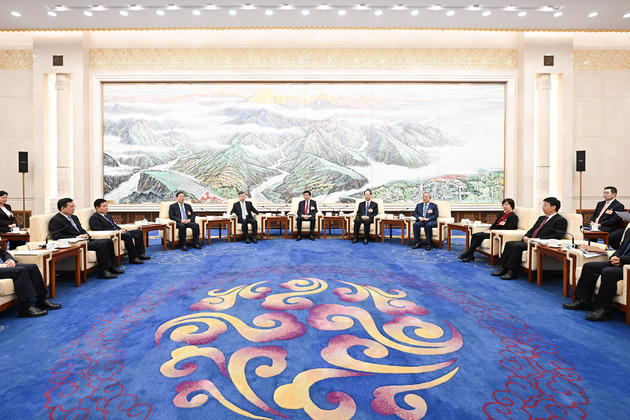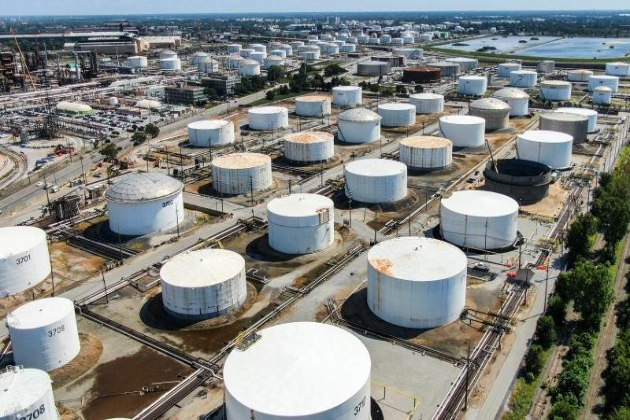China's regional powerhouses turbocharge high-quality development
Xinhua
10 Mar 2025, 22:06 GMT+10

BEIJING, March 10 (Xinhua) -- Having long propelled China's economic ascent, major provincial-level regions are now leading the charge in the country's transformative shift toward high-quality development.China's top 10 provincial economic heavyweights, including Guangdong, Jiangsu, Shandong, Zhejiang and Sichuan, accounted for over 60 percent of the country's GDP, despite covering less than 20 percent of its land area.Their development is redefining China's economic landscape and providing insights into how the world's second-largest economy navigates domestic and global challenges in the final year of the 14th Five-Year Plan (2021-2025) to lay a strong foundation for the next five years and beyond.INNOVATION AS THE NEW DRIVING FORCEFrom artificial intelligence (AI), robotics and brain-computer interfaces to innovative drugs, China's economic powerhouses are doubling down on sci-tech innovation, yielding significant results in high-tech sectors.A prime example is east China's Zhejiang Province, where the capital city, Hangzhou, has emerged as the country's hottest new tech hub. It has successfully nurtured a wave of cutting-edge companies known as the "Six Little Dragons," including the globally trending startups DeepSeek and Unitree Robotics.Hangzhou's rise into an emerging tech hub is no coincidence. Experts and analysts attributed its success to years of groundwork, driven by the city's deep talent pool, a robust industrial ecosystem, strong policy support, a business-friendly environment, and visionary economic governance.In Zhejiang's 2025 government work report, the province vowed to further cultivate new quality productive forces this year, foster emerging industries, plan for future industries, and promote the deep integration of the digital economy with the real economy.In the neighboring Jiangsu Province, a relentless focus on sci-tech innovation has cemented its position as a front-runner in the numbers of national key laboratories and engineering technology centers. Last year, Jiangsu set a national record with 13 innovative drugs approved for sale.Last year, the GDP growth of Zhejiang and Jiangsu reached 5.5 percent and 5.8 percent, respectively, both exceeding the national growth of 5 percent.Leveraging their sci-tech resources, China's powerhouse provinces are well poised to drive innovation as a key engine of growth and accelerate the deployment of sci-tech advances in major industries, creating a ripple effect nationwide, said national political advisor Jin Li, vice president of Southern University of Science and Technology.CLIMBING UP THE VALUE CHAINIn just 53 seconds, a new energy vehicle (NEV) can roll off the fully automated assembly line at GAC Aion's factory in south China's Guangdong Province, where precise robotic arms twist and turn in seamless coordination.Dubbed a "dark factory" due to its minimal reliance on human labor and lighting, the facility is also the NEV industry's sole "lighthouse factory" worldwide, highlighting its role in spearheading intelligent manufacturing.The factory symbolizes Guangdong's broader industrial transformation. Once synonymous with low-end assembly lines, the province is now embracing advanced technologies and increasing investments to modernize traditional industries and move up the value chain.At present, production of advanced manufacturing accounts for 56.7 percent of Guangdong's industrial output, while high-tech manufacturing takes up 31.6 percent of the total.East China's Shandong Province, one of the country's major grain-producing areas, has empowered modern agriculture development with new technologies, such as drones and automated irrigation systems.In its 2025 government work report, Shandong pledged to implement an action plan for high-quality industrial chain development, focusing on high-end, intelligent and green features this year, while also accelerating the development of intelligent agriculture.Leveraging their strong industrial foundation, these powerhouses should further promote the upgrading of traditional industries, maintain leading roles in shaping new competitive advantages, and set an example for other regions, said Pan Jiaofeng, a national lawmaker and president of the Institutes of Science and Development at the Chinese Academy of Sciences.GREATER INTEGRATIONFor the economic powerhouses to maintain momentum, it is essential to foster a fair and efficient environment free from local protectionism, according to analysts.Southwest China's Sichuan Province and Chongqing Municipality have recently completed an electricity-sharing mechanism as part of their latest effort to enhance market connectivity. In recent years, the two regions have aligned their market entry policies and jointly launched a cross-regional development zone."By addressing the bottlenecks in economic circulation and curbing unhealthy competition, the innovation potential of market players will be fully unleashed," said Yang Decai, a national political advisor and professor at Nanjing University.Regional integration is gaining momentum nationwide. Shanghai is expanding cooperation within the Yangtze River Delta region. Guangdong is streamlining administrative services to improve connectivity in the Guangdong-Hong Kong-Macao Greater Bay Area. Hubei is partnering with Jiangxi and other central Chinese provinces to build a globally competitive digital ecosystem."Different regions are at varying stages of development. By implementing regional strategies, we can further amplify comparative advantages, improve efficiency, and unlock greater growth potential," said Liu Baokui, a researcher at a think tank under the National Development and Reform Commission.According to Bao Jiawei, an urban development researcher, it is about forging synergies, not working in isolation.
 Share
Share
 Tweet
Tweet
 Share
Share
 Flip
Flip
 Email
Email
Watch latest videos
Subscribe and Follow
Get a daily dose of Hong Kong Herald news through our daily email, its complimentary and keeps you fully up to date with world and business news as well.
News RELEASES
Publish news of your business, community or sports group, personnel appointments, major event and more by submitting a news release to Hong Kong Herald.
More InformationChina
SectionChina targets 5 percent growth for 2025 amid economic uncertainty
BEIJING, China: China has set an economic growth target of around five percent for 2025, signaling efforts to stabilize the economy...
US tariffs threaten Italy’s farm exports, from Prosecco to Parma ham
ROME, Italy: Italy's agricultural sector is bracing for a major hit as U.S. tariffs threaten exports of iconic products like Prosecco...
Chinese nationals accused of hacking US government, newspapers to get data on dissidents
(CN) - The Justice Department announced Wednesday indictments against a dozen Chinese nationals, claiming they worked to steal data...
Face-changing and Kung Fu -- Chinese culture shines on world street dance stage
by Xinhua writers Lyu Qiuping and Lu YouyiCHENGDU, March 10 (Xinhua) -- On a stage in Los Angeles, the United States, a 4-minute-and-17-second...
China's regional powerhouses turbocharge high-quality development
BEIJING, March 10 (Xinhua) -- Having long propelled China's economic ascent, major provincial-level regions are now leading the charge...
(TWO SESSIONS) CHINA-BEIJING-CPPCC-WANG HUNING-PRESS REPRESENTATIVES-VISIT (CN)
(250310) -- BEIJING, March 10, 2025 (Xinhua) -- Wang Huning, a member of the Standing Committee of the Political Bureau of the Communist...
Business
SectionUS: Refilling oil reserve fully will cost $20 billion, take years
WASHINGTON, D.C.: The U.S. Energy Department estimates it will take US$20 billion and several years to refill the Strategic Petroleum...
BP CEO’s pay drops to 5.4 million pounds in 2024
LONDON, U.K.: British Petroleum CEO Murray Auchincloss saw his pay package drop to 5.4 million pounds (US$6.95 million) in 2024, down...
DHL to cut 8,000 German jobs in largest layoff in 20 years
BONN, Germany: DHL plans to cut 8,000 jobs in Germany this year, marking its most significant domestic workforce reduction in at least...
China targets 5 percent growth for 2025 amid economic uncertainty
BEIJING, China: China has set an economic growth target of around five percent for 2025, signaling efforts to stabilize the economy...
SpaceX denies plans to take over FAA telecom contract
WASHINGTON, D.C.: Elon Musk's company SpaceX said this week that its Starlink satellite unit is not trying to take over any Federal...
Newsom mandates four-day in-office work for California state employees
SACRAMENTO, California: Starting July 1, California state employees will be required to work in person at least four days a week under...










